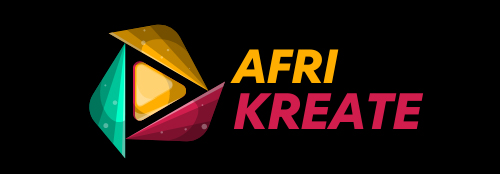Digital storytelling represents a revolutionary approach to narrating stories, merging traditional storytelling methods with modern technology to craft immersive and engaging experiences. By using a combination of multimedia elements—such as text, images, audio, video, and interactive features—digital storytelling has transformed the way audiences consume and interact with content. In the realm of online journalism, this approach has become indispensable, offering a dynamic way to communicate information while catering to the needs and preferences of diverse audiences.
At its core, digital storytelling begins with a strong narrative. The story must have a clear purpose, compelling structure, and emotional resonance. Traditional journalistic principles, such as accuracy, clarity, and relevance, remain central to crafting a digital narrative, ensuring the integrity of the content. Narratives can take different forms depending on the type of story being told. For example, breaking news might follow the inverted pyramid structure, where the most critical information appears first, while feature stories may adopt Freytag’s pyramid, emphasizing a dramatic arc. Regardless of the structure, the goal is to engage the audience emotionally and intellectually.
The integration of multimedia elements is a defining feature of digital storytelling. Text often serves as the backbone, providing context and depth. It is complemented by images, which evoke emotions and offer visual clarity. Photographs or illustrations, carefully chosen and placed, can amplify the impact of a story, drawing the reader’s attention to key moments or themes. Videos, on the other hand, bring dynamic visual storytelling into play. They are especially effective in capturing real-time events, conducting interviews, or offering in-depth explorations of complex topics. Audio, whether in the form of voiceovers, soundscapes, or music, sets the tone and atmosphere, making the narrative more immersive. Interactive features such as clickable maps, timelines, data visualizations, or quizzes actively engage the audience, transforming them from passive consumers into active participants.
One of the key strengths of digital storytelling is its adaptability to different platforms. Social media platforms like Instagram and TikTok demand concise, visually driven content that resonates quickly with audiences, whereas a website or blog allows for long-form, scrollable narratives. For instance, Instagram stories might feature short videos or infographics to explain a concept, while a news website could host an in-depth investigative report with integrated multimedia. In an age where mobile devices dominate content consumption, optimizing stories for mobile viewing has become a necessity. Ensuring that content is accessible, readable, and visually appealing on smaller screens is a vital aspect of digital storytelling.
Interactivity is another hallmark of effective digital storytelling. By including elements that allow users to interact directly with the story, journalists can create a deeper sense of engagement. For example, a map that tracks the progress of a natural disaster or a timeline of historical events allows readers to explore information at their own pace. Similarly, tools like quizzes or polls encourage audiences to participate actively, making the storytelling experience more personal and memorable.
The benefits of digital storytelling are manifold. One of its most significant advantages is audience engagement. By combining multimedia and interactive elements, storytellers can capture the attention of diverse audiences and make complex topics more digestible.
A well-crafted story that incorporates visuals and sound can also establish a strong emotional connection with the audience, leaving a lasting impression. Furthermore, digital storytelling is inherently accessible, as it can be tailored for various devices and platforms, ensuring that audiences across the globe can access the content. Another key benefit lies in the ability to analyze audience behavior through analytics tools. These tools provide insights into how users interact with content, helping journalists refine their storytelling techniques to better meet the needs of their audience.
To create compelling digital stories, journalists and content creators rely on a variety of tools. For content creation, software like Adobe Premiere Pro or Final Cut Pro is essential for video editing, while Canva and Adobe Spark are popular choices for designing graphics and visual elements. Audio production tools such as Audacity and GarageBand are used to create soundscapes, voiceovers, and other audio features. For interactive storytelling, platforms like Flourish, Story Map JS, and Thing Link allow journalists to add layers of engagement to their narratives.
Meanwhile, publishing platforms like WordPress, Squarespace, and social media channels serve as the primary means of distributing digital stories to a wide audience.
Despite its many advantages, digital storytelling is not without challenges. Ethical considerations are paramount, as journalists must balance storytelling with factual accuracy and ensure that their narratives respect privacy and cultural sensitivities. For example, adding dramatic elements to a story should never come at the expense of truthfulness. Technical barriers also pose a challenge, as access to high-quality tools and training can be costly or time-consuming.
Additionally, in today’s saturated media environment, audiences are often overwhelmed by content, making it difficult for stories to stand out. To overcome this, journalists must continually innovate and find fresh ways to engage their readers.
Emerging trends in digital storytelling are reshaping the landscape of online journalism. Immersive technologies like Virtual Reality (VR) and Augmented Reality (AR) are gaining traction, offering audiences the chance to experience stories in entirely new ways. For example, VR can transport viewers to the frontlines of a conflict, while AR can overlay digital elements onto real-world environments to enhance understanding.
Another trend is the rise of short-form content, driven by platforms like TikTok, Instagram Reels, and YouTube Shorts. These platforms prioritize bite-sized narratives that can be consumed quickly, making them ideal for today’s fast-paced digital environment. Data-driven storytelling is also on the rise, with journalists using tools like Tableau and Python to visualize and present complex data in engaging formats. Moreover, artificial intelligence is increasingly playing a role in content creation, from automating scriptwriting to generating visuals and subtitles.
Examples of successful digital storytelling abound. The New York Times is renowned for its interactive long-form pieces, such as the Pulitzer Prize-winning “Snow Fall,” which combines stunning visuals, interviews, and video to immerse readers in the story of an avalanche.
Similarly, BBC Stories leverages short-form videos and infographics optimized for social media, while National Geographic excels in visual storytelling through its use of breathtaking photography and compelling narratives.
For those looking to get started in digital storytelling, the journey begins with learning the tools of the trade. Experimenting with multimedia tools such as Canva, iMovie, or even a smartphone camera can help budding journalists develop their skills. Building storytelling techniques through practice and feedback is equally important, as is sharing content on platforms like Medium or YouTube to reach an audience. Analytics tools provide valuable insights into what resonates with readers, enabling creators to refine their approach and improve over time.
In conclusion, digital storytelling is a powerful tool that combines the art of storytelling with the capabilities of modern technology to engage, inform, and inspire audiences. By mastering this craft, journalists can create impactful stories that resonate deeply with readers while adapting to the ever-evolving digital landscape. Whether through immersive VR experiences, data-driven narratives, or short-form social media content, the possibilities of digital storytelling are virtually limitless.



